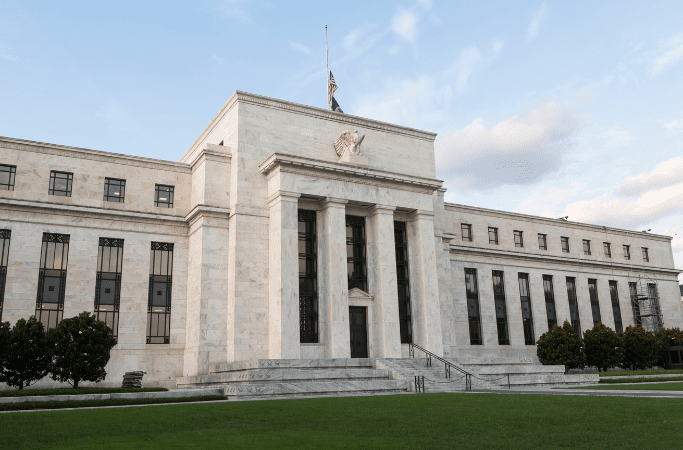Unconventional monetary policies involve strategic actions such as quantitative easing, foreign exchange interventions, and large scale asset purchases—including government bonds and long-term bonds. Central banks resort to these measures when traditional tools, like manipulating the federal funds rate, prove inadequate for stimulating the economy or managing financial crises. These policies expand the central bank’s balance sheet and are intended to inject liquidity into the financial system, influencing interest rates and asset prices.
When standard monetary levers fail to achieve desired economic outcomes, central banks deploy these unconventional tools to directly impact the broader economy. By purchasing substantial amounts of financial assets, central banks aim to lower long-term interest rates, encourage borrowing, and increase spending. This can lead to significant effects on global financial markets, particularly in enhancing liquidity and stabilizing financial institutions during periods of economic uncertainty.
Understanding Unconventional Monetary Policies

Unconventional monetary policies encompass strategies like quantitative easing, foreign exchange interventions, and the large scale purchases of assets such as government bonds and long-term bonds. These approaches are adopted by central banks when traditional monetary tools, such as adjustments to the federal funds rate, are insufficient to stimulate the economy or manage financial crises. These policies directly affect the financial system by increasing liquidity and influencing the broader economic landscape.
The implementation of these unconventional measures allows central banks to lower long-term interest rates and increase money supply, thereby encouraging borrowing and spending. This can significantly impact global financial markets, enhancing liquidity and stabilizing financial institutions during economic downturns. As a result, these policies play a crucial role in mitigating financial instability and fostering economic recovery.
The Role of Central Banks

Central banks, such as the Federal Reserve, are instrumental in implementing unconventional monetary policies aimed at maintaining financial stability and stimulating economic growth. By significantly adjusting their balance sheets through methods like asset purchases and interest rate manipulations, these institutions directly influence exchange rates and the broader financial markets. Such actions are crucial in times of economic downturn, where conventional monetary tools may fall short.
These policy maneuvers by central banks not only affect domestic economic conditions but also have far-reaching effects on the global financial landscape. The alteration of balance sheets, particularly through the increase in asset holdings, injects liquidity into the financial system, mitigating the risks of financial crises and encouraging investment and spending. This proactive stance helps stabilize the economy during turbulent times and lays the groundwork for recovery and growth.
Also Read: Federal Reserve's Quantitative Tightening Policy
Impact on Emerging Market Economies
Emerging markets are highly susceptible to the ripple effects of unconventional monetary policies implemented by advanced economies. When countries like the United States or members of the European Union announce policies such as quantitative easing or interest rate adjustments, these decisions can trigger abrupt capital flows into or out of emerging markets. Such movements can significantly impact local currency sovereign debt and lead to substantial exchange rate pressures, affecting the financial stability and economic health of these regions.
These capital flows can either flood emerging markets with foreign capital, leading to currency appreciation and potential asset bubbles, or result in rapid capital flight, causing currency depreciation and economic instability. The volatility induced by these flows poses challenges for policymakers in emerging markets, who must balance between attracting foreign investment and maintaining economic stability. Thus, the global interconnectivity underscores the importance of coordinated policy responses to manage the impacts of unconventional monetary policies on a worldwide scale.
Currency Depreciation

Domestic currency depreciation is a significant consequence of unconventional monetary policies, particularly in the context of emerging markets. While a weaker currency can enhance a country's export competitiveness by making its goods cheaper on the international market, this advantage is often temporary. If the depreciation persists, it may lead to increased inflation expectations as import costs rise, potentially eroding the purchasing power of consumers and businesses within the economy.
Sustained currency depreciation also harbors risks to financial stability. As the value of the local currency declines, debt servicing on foreign-denominated loans can become more costly, putting pressure on both private and public borrowers. Moreover, prolonged depreciation might undermine investor confidence, leading to capital outflows and further exacerbating the financial challenges. Therefore, while initial depreciation can provide an economic boost, its prolonged presence requires careful management to avoid undermining the broader economic health.
Effects on Global Financial Markets
Financial markets respond dynamically to unconventional monetary policies with notable fluctuations in bond yields, stock markets, and foreign exchange reserves. For example, policies such as quantitative easing can lead to lower bond yields as the demand for bonds increases, while simultaneously boosting stock market valuations due to the lower yield environment. Additionally, these policies often result in the accumulation of foreign exchange reserves as central banks intervene in forex markets to manage their currencies' value against major trading partners.
In reaction to the impacts of these international policy decisions, emerging market central banks often take corrective actions to stabilize their economies. One common approach is fx interventions, which are used to manage excessive currency depreciation and maintain competitive balance in international trade. These interventions help mitigate the negative effects of volatile capital flows and preserve economic stability, illustrating the interconnected nature of global financial systems and the proactive steps taken by nations to safeguard their economic interests.
Financial Assets and Exchange Rates
Unconventional monetary policies significantly impact the valuation of financial assets and foreign currencies, directly influencing capital inflows and the overall stability of financial market conditions. When central banks implement policies like quantitative easing or foreign exchange interventions, the immediate effect is often an increase in asset prices and a shift in currency values. These changes can attract foreign investments, enhancing liquidity, but can also lead to market distortions if not carefully managed.
Furthermore, these policies can necessitate a change in the monetary policy stance of affected countries, leading to a ripple effect in economic activities. For instance, a country might lower its interest rates in response to capital inflows to control currency appreciation and maintain export competitiveness. Such adjustments can stimulate domestic economic activities by making borrowing cheaper and encouraging spending but may also pose risks of overheating the economy or creating asset bubbles. Thus, the strategic deployment and subsequent adjustments of monetary policies are crucial for balancing economic growth with financial stability.
Long-term Implications

Empirical evidence indicates that unconventional monetary policies, such as quantitative easing and interest rate cuts, can provide short-term stabilization to the domestic economy. These measures can quickly inject liquidity into the financial system, bolster consumer confidence, and support economic growth during downturns. However, the immediacy of their benefits is often countered by less predictable long-term outcomes.
In the longer term, these policies can lead to significant trade-offs between maintaining price stability and mitigating financial shocks. For example, prolonged low interest rates might encourage excessive borrowing and lead to asset bubbles, which can destabilize financial markets when they burst. Similarly, heavy reliance on printing money can eventually lead to inflationary pressures, complicating the central bank's task of balancing growth with the control of price levels. Hence, while beneficial in the short term, the long-term management of these policies requires careful calibration to avoid adverse effects.
The Challenge of Financial Stability
Financial stability is a paramount concern in the global economy, particularly as foreign capital and portfolio flows can amplify financial stress in both the bond and equity markets. These capital movements, often triggered by shifts in monetary policy or global economic conditions, can create volatility and unpredictability. For instance, rapid inflows can inflate asset prices, while sudden outflows might lead to sharp declines, both scenarios posing risks to financial stability.
In this context, the strategic role of central banking is crucial. Central banks need to meticulously balance the pursuit of economic growth against the need for medium-term price stability. This balancing act involves using monetary tools to manage liquidity and influence interest rates, aiming to mitigate extreme fluctuations in the financial markets while fostering an environment conducive to sustainable economic development. The effectiveness of these strategies is essential for maintaining confidence among investors and ensuring the overall health of the economy.
Conclusion
The interplay between unconventional monetary policies and the forex market is a complex dynamic that significantly influences economic implications for both market participants and global investors. The implementation of such policies can drastically alter exchange rates, impact international trade balances, and influence global investment patterns. Understanding how these policies affect currency values and the overall financial stability of different economies is crucial for investors navigating these markets.
Ongoing and recent research plays a vital role in deepening our understanding of these intricate dynamics. Such studies help in crafting informed macroprudential measures and shaping effective fiscal policies that can mitigate adverse effects while maximizing economic benefits. For policymakers and financial analysts, continuous investigation into the outcomes of unconventional monetary strategies ensures that subsequent decisions are data-driven, promoting both national and global economic stability and growth.
Also Read: What is FOMC?- Everything You Must Know
FAQs
What are unconventional monetary policies?
Unconventional monetary policies refer to non-traditional financial actions taken by central banks, such as quantitative easing, negative interest rates, and large-scale asset purchases. These measures are typically used when conventional policies, like adjusting interest rates, are insufficient to stimulate the economy.
How do unconventional monetary policies affect the forex market?
Unconventional monetary policies can significantly influence the forex market by altering exchange rates. For instance, policies that increase the money supply might lead to currency depreciation, whereas measures to tighten the supply can appreciate a currency. These changes affect international trade and investment flows.
Why is ongoing research important in understanding the impact of unconventional monetary policies?
Ongoing research is crucial as it provides updated insights and empirical data on the effects of unconventional monetary policies. This research helps policymakers and investors understand potential economic outcomes and refine strategies to promote financial stability and sustainable growth.

















